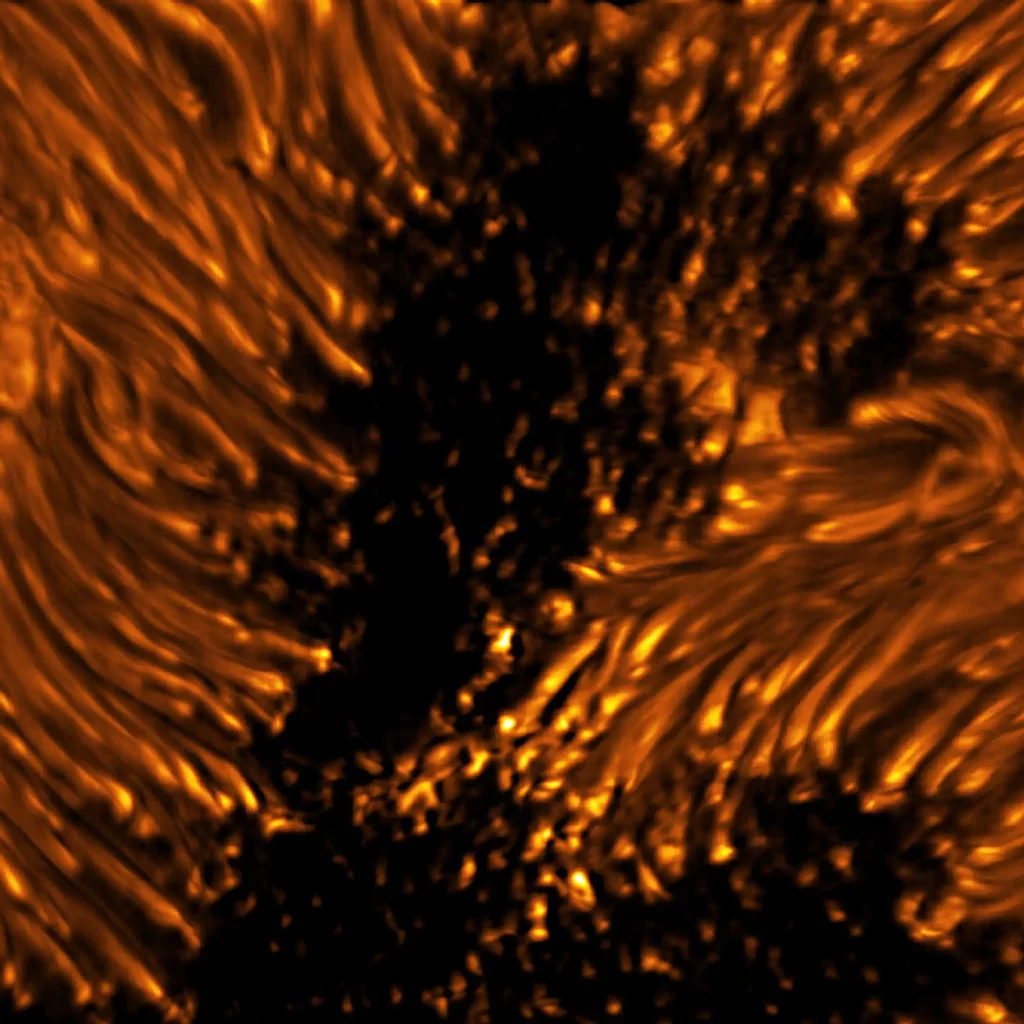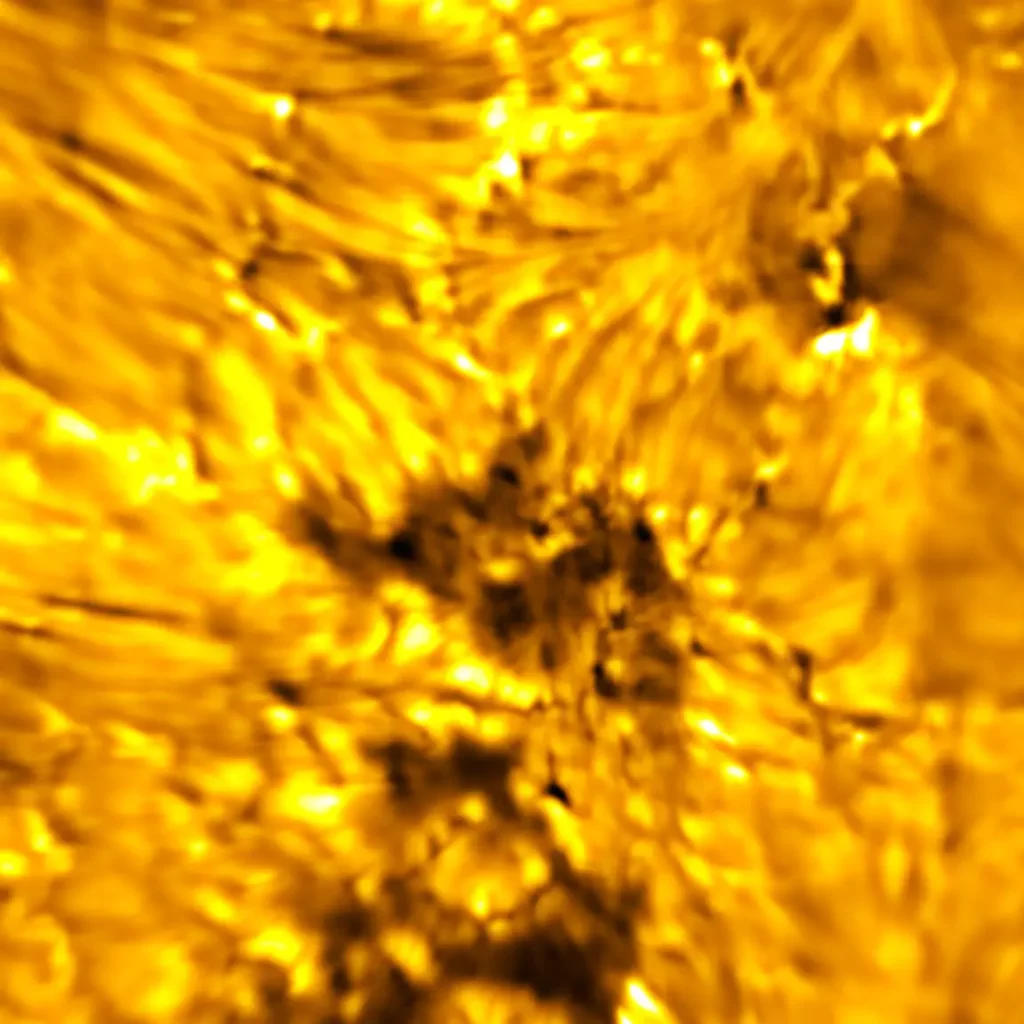
The National Science Foundation’s (NSF) Daniel K. Inouye Solar Telescope has unveiled a captivating glimpse into our closest star, the sun.
The release of eight mesmerizing images by the National Science Foundation’s (NSF) Daniel K. Inouye Solar Telescope showcases the extraordinary capabilities of this groundbreaking ground-based solar telescope.
Though stunning, these amazing images are more than mere eye candy. Scientists can use these observations to deepen our understanding of the sun’s magnetic field and the forces that drive solar storms.
Unveiling the Sun’s surface
The newly released images from the Inouye Solar Telescope provide an awe-inspiring glimpse into the Sun’s photosphere, the visible surface of the sun covered in dark and cool regions dotted with sunspots.

These sunspots are often as large as Earth — and sometimes even larger — and are characterized by strong magnetic fields. But their significance extends beyond mere spectacle.
Complex sunspots, or clusters of them, can birth explosive events like flares and coronal mass ejections, generating solar storms that impact the sun’s outermost atmospheric layer, known as the heliosphere.
These tempestuous outbursts — which are made of very hot, electrically charged gas traveling at speeds over tens of thousands of miles per hour — have the potential to reach Earth’s atmosphere, where they wreak havoc on vital infrastructure.
These cosmic disturbances can interfere with satellite communications, disrupt power grids, and pose potential risks to astronauts in space.


Within these sunspots, the powerful Daniel K. Inouye Solar Telescope could distinguish light bridges—an intricate web of energy spanning from one end of a sunspot’s dark center (umbra) to the other. These bridges signify the beginning of a decaying sunspot, which will eventually fragment.
In addition to sunspots, the images capture the convection cells in the Sun’s photosphere, displaying a vibrant pattern of hot plasma rising and cooler plasma sinking. These convection cells create a speckled texture on the visible surface of the Sun, resembling popcorn.
Above the photosphere, in the chromosphere (a reddish and glowing layer of gas ), dark fibrils emerge from small-scale magnetic field accumulations. These fibrils, resembling hair-like threads of plasma, provide further insights into the dynamic nature of the Sun’s atmosphere.


Unlocking the sun’s secrets with a unique telescope
The Inouye Solar Telescope, located on the island of Maui in Hawai’i, is the largest optical solar telescope in the world. With its 4-meter mirror and prime optimal viewing conditions near the top of Haleakala, Maui’s largest volcano, this groundbreaking telescope provides unprecedented observations of the Sun’s surface.
The telescope channels 13 kW of solar power, generating enormous amounts of heat that must be carefully managed to protect its delicate optics. Specialized cooling systems, including thin cooling plates and shade-providing shutters within the dome, help stabilize the temperature around the telescope.
The Inouye Solar Telescope’s remarkable spatial resolution and sensitivity allow astronomers to unravel the mysteries of our nearest star. By peering into the Sun’s surface, scientists hope to uncover the origin of solar magnetism, understand the mechanisms of coronal heating and drivers of the solar wind, and study flares and coronal mass ejections.
These phenomena, originating from complex sunspots or groups of sunspots, can trigger explosive events like solar storms that have the potential to impact Earth and our critical infrastructure.
A glimpse of what’s to come
As the Inouye Solar Telescope continues to explore the Sun, we can anticipate more spectacular views and groundbreaking scientific discoveries. We’re heading towards a solar maximum expected for 2025, which will see even more sunspot activity.
That’s because the sun’s activity isn’t constant but rather waxes and wanes over the course of a roughly 11-year cycle.
The Inouye Solar Telescope represents a remarkable feat of engineering and scientific collaboration. Named in honor of the late Hawaiian Senator Daniel K. Inouye, this telescope stands as a testament to humanity’s curiosity and quest for knowledge. It is through the lenses of such groundbreaking instruments that we gain a deeper understanding of our Solar System’s most influential celestial body—the Sun.
Note: The Inouye Solar Telescope is currently in its Operations Commissioning Phase, a period of learning and transitioning where scientists optimize its capabilities and continue to calibrate and deliver data to the scientific community and the public.



